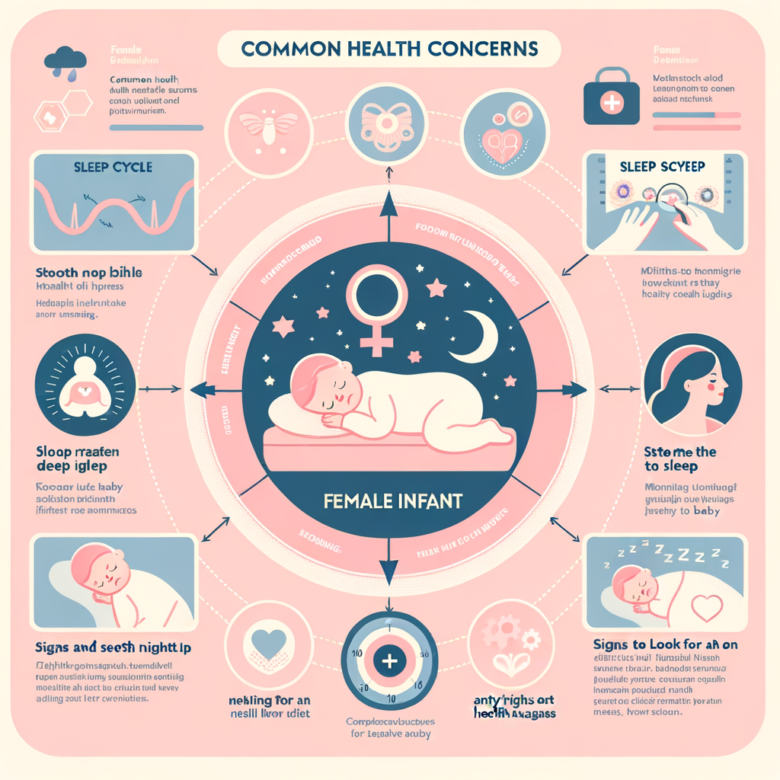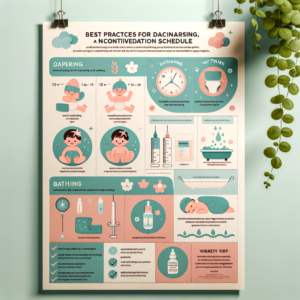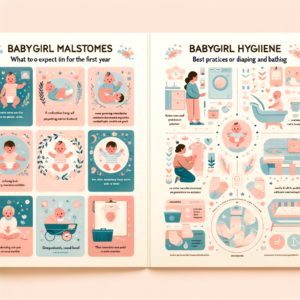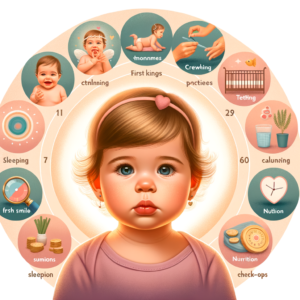Sleep is crucial for your babygirl’s growth, development, and overall well-being. However, getting a baby to sleep soundly can be one of the biggest challenges for new parents. This comprehensive guide will provide you with effective strategies and tips to help your babygirl (and you) get the rest you both need.
Understanding Baby Sleep Patterns
Before diving into solutions, it’s important to understand typical sleep patterns for babies:
Newborns (0-3 months):
- Sleep 14-17 hours per day
- No set sleep schedule
- Short sleep periods of 2-4 hours
Infants (4-11 months):
- Sleep 12-15 hours per day
- Longer nighttime sleep periods
- 2-3 daytime naps
Toddlers (1-2 years):
- Sleep 11-14 hours per day
- One or two daytime naps
Creating a Sleep-Friendly Environment
A conducive sleep environment can significantly improve your babygirl’s sleep quality.
- Temperature: Keep the room between 68-72°F (20-22°C)
- Lighting: Use blackout curtains or shades for a dark sleep environment
- Noise: Consider a white noise machine to mask disruptive sounds
- Bedding: Use a firm mattress with fitted sheets; avoid loose bedding
- Sleepwear: Dress your baby in comfortable, breathable sleepwear
Establishing a Bedtime Routine
A consistent bedtime routine signals to your babygirl that it’s time to sleep.
- Start the routine at the same time each night
- Keep activities calm and soothing
- Include elements like:
- A warm bath
- Gentle massage
- Reading a story
- Singing a lullaby
- End the routine in the room where your baby sleeps
Sleep Training Methods
There are several sleep training methods to consider. Always choose one that you’re comfortable with and that suits your babygirl’s temperament.
1. Gradual Withdrawal (The Chair Method)
- Sit in a chair next to the crib until baby falls asleep
- Gradually move the chair farther away over several nights
2. Controlled Crying (Ferber Method)
- Put baby down drowsy but awake
- Check on her at gradually increasing intervals
3. Pick Up, Put Down Method
- Pick up your baby when she cries, then put her down when calm
- Repeat until she falls asleep
4. No-Cry Sleep Solution
- Gradually decrease sleep associations (like rocking or feeding to sleep)
- Implement positive sleep associations (like a lovey or white noise)
Dealing with Common Sleep Issues
Night Wakings
- Ensure baby is full before bedtime
- Consider dream feeding
- Gradually reduce night feedings for older babies
Early Wakings
- Ensure room is dark in the early morning
- Adjust bedtime if needed
- Be consistent with morning wake-up time
Nap Resistance
- Watch for sleep cues
- Maintain a consistent nap schedule
- Create a abbreviated version of the bedtime routine for naps
Safe Sleep Practices
Always prioritize safety in your babygirl’s sleep environment:
- Always place baby on her back to sleep
- Use a firm sleep surface in a safety-approved crib
- Keep soft objects and loose bedding out of the crib
- Consider room-sharing (but not bed-sharing) for the first 6-12 months
- Avoid overheating
- Offer a pacifier at bedtime (if breastfeeding is well-established)
Sleep Regressions
Sleep regressions are common at certain developmental stages:
| – 4 months: Due to sleep cycle changes |
|---|
- 8-10 months: Often linked to increased mobility
- 12 months: Can coincide with learning to walk
- 18 months: May be related to separation anxiety
Tips for handling regressions:
- Stay consistent with your routine
- Offer extra comfort, but avoid creating new sleep crutches
- Be patient; regressions usually pass in 2-6 weeks
Transitioning to a Toddler Bed
When your babygirl is ready (usually between 18 months and 3 years):
- Make the transition gradual
- Keep the same bedtime routine
- Use positive reinforcement
- Be prepared for initial bedtime resistance
Frequently Asked Questions
Q: When can I expect my babygirl to sleep through the night? A: Many babies can sleep for longer stretches by 3-6 months, but every baby is different.
Q: Is it okay to let my baby cry it out? A: This is a personal decision. Some parents find controlled crying effective, while others prefer no-cry methods. Choose what feels right for your family.
Q: How many naps should my babygirl take? A: This varies by age. Newborns have multiple short naps, while by 12 months, most babies take 1-2 naps per day.
Q: Can I give my babygirl a blanket to sleep with? A: For safety, it’s best to avoid blankets in the crib until at least 12 months of age.
Q: What if my babygirl wakes up too early? A: Ensure the room is dark, adjust bedtime if needed, and maintain a consistent wake-up time.
Conclusion
Establishing healthy sleep habits for your babygirl is a process that requires patience, consistency, and sometimes a bit of trial and error. Remember that every baby is unique, and what works for one may not work for another.
Don’t hesitate to consult with your pediatrician if you have concerns about your babygirl’s sleep patterns or if sleep problems persist despite your best efforts. With time and consistency, most babies develop healthy sleep habits that allow the whole family to get the rest they need.
Remember, this phase doesn’t last forever. Stay patient, take care of yourself, and enjoy the precious moments of peace when your little one is sleeping soundly. Sweet dreams to you and your babygirl!



